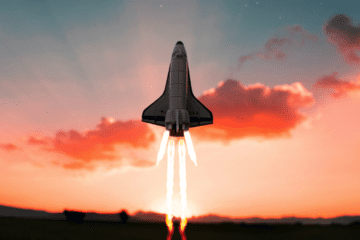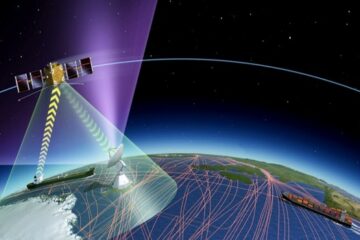Introduction
The Artemis program is the human spaceflight program that has the goal of landing “the first woman and the next man” on the Moon, by 2024. The program is carried out predominantly by NASA, U.S. commercial spaceflight companies contracted by NASA, and international partners including the European Space Agency (ESA), the Japan Aerospace Exploration Agency (JAXA), Canadian Space Agency (CSA), the Italian Space Agency (ASI) the Australian Space Agency (ASA), the UK Space Agency (UKSA) and the United Arab Emirates Space Agency (UAESA). Despite NASA is leading the program, expects international partnerships to play a key role in advancing Artemis as the next step towards the long-term goal of establishing a sustainable presence on the Moon, laying the foundation for private companies to build a lunar economy, and eventually sending humans to Mars.
Artemis Accords
With numerous countries and private sector players conducting missions and operations in cislunar space, it is critical to establish a common set of principles to govern the exploration and the use of outer space. Having said that, the Artemis Accords aim at describing a shared vision of principles, in order to create a safe and transparent environment which can facilitate exploration, science but also commercial activities. To date seven countries have signed the Accords (Japan, Canada, Italy, UK, Australia, UAE, Luxemburg) and many others are expected to do so in the next months. The principles agreed in the pact are Transparency, Emergency Assistance, Sharing of Scientific Data and Protecting Heritage, but it also establishes regulations on the Extraction of Resources, Registration of Space Objects and Orbital Debris Disposal.
International Partners
“Artemis will be the broadest and most diverse international human space exploration program in history, and the Artemis Accords are the vehicle that will establish this singular global coalition” (J. Bridenstine, NASA Administrator).
Among the international partners, the contribution of the European Space Agency will be essential. On Oct. 27th 2020, NASA and ESA have finalized an agreement to collaborate on the Artemis Gateway (the lunar space station at the base of the program), so that ESA will contribute to designing and building the main habitat for the astronauts who will visit the Gateway, the International Habitation Module. The I-Hab will use environment and life-support systems provided by Japan’s Space Agency (JAXA). A second contribution will be Esprit module, which will supply enhanced communications, refueling and which will be provided with an European-built Cupola (observation window) similar to the one of the ISS. Transport to the Gateway will use mainly NASA’s Orion spacecraft, for which ESA is building two European service modules. JAXA is also designing, in collaboration with Toyota, a Pressurized Rover which will enable astronauts to travel longer distances, living inside it for up to 14 days. All these contributions and collaborations represent the first step towards a new era that will bring international crew members and, one day, the first European and Asian Astronauts to the lunar surface.
Private Partners and Financing
“In the 1960s, ‘70s, and ’80s, there weren’t entrepreneurs who were willing to invest in space, today they are ready to put their own money behind it because they think there’s a future profit to be made” (D. Loverro, former Chief of NASA human spaceflight).
In stark contrast with the twin mission Apollo, a key role is expected to be played by private entities. The participation of these companies to the program will produce a double positive effect: the huge costs of the mission (about 35 billion dollars estimated for the period 2020-2024) will not be sustained anymore entirely by US public spending and, moreover, there will be a strong incentive towards innovation, favored by the high-competitive environment which characterizes the private space sector. On Apr. 20th 2020, NASA announced 967 million dollars in design development funding to three companies (Blue Origin, Dynetics, and SpaceX) to do initial design of Human Landing Systems (HLS). These companies will continue to develop their landers, respectively the Integrated Lander Vehicle by Blue Origin, the SpaceX’s Starship and Dynetics’ HLS, and in 2021 NASA will select two of them, starting a development period which will conclude with the first mission to the lunar surface, Artemis III, in 2024. Further contributions will be relevant in the field of Launch Systems: SpaceX’s Falcon Heavy will be used to launch the Dragon XL resupply spacecraft designed to carry pressurized and unpressurized cargo, and ESA’s Ariane 6 will launch Esprit module which will be part of the Gateway Space Station.
Description of The Program: Stages and Main Components
From a chronological perspective the Artemis Program can be divided into three stages. Firstly, on Nov. 2021 NASA will launch Artemis I, an uncrewed flight that aims at testing both the Space Launch System (SLS) and the Orion spacecraft, and, in order to do so, NASA will use ground systems located at the Kennedy Space Center in Florida, that will be tested as well during the mission. In 2023, it will be the turn of Artemis II, which this time will take the form of a crewed flight sent to the Moon’s orbit for a period of about two weeks, but without landing, since this is supposed to be just a test for the deep space communications networks. Moreover, simultaneously with Artemis II, the launch of the Power and Propulsion Element and of the Habitation and Logistics Outpost modules (components of the Gateway Space Station) will take place. Finally, there will be Artemis III, the fundamental part of this mission, which will lead to the landing of humans on the surface of the Moon by 2024. Hopefully, these three steps will represent just the beginning of the story, since Artemis III is supposed to be followed by several other missions that aim at building a permanent base on the Moon by 2028.
Focusing on the main components which will allow the program to take place, it is noteworthy to again mention the Space Launch System (SLS), which is currently the world’s most astonishing launch system, even bigger and more powerful than the legendary Saturn V of the Apollo era. Then, another essential role is played by Orion, a deep space and human-rated spacecraft built in three parts: the crew module, meant to receive up to 4 astronauts, the service module built by ESA, and the launch abort system supposed to keep safe the crew. Finally, the last major component is the Gateway, a dedicated lunar station in orbit around the Moon, that will probably be expanded, following the model of the ISS, as new missions and partnerships will develop. The Gateway will be used by NASA and its international partners as a springboard for robotic and human expeditions to the surface of the Moon, and hopefully, in the future, even beyond our satellite.
The Lunar Economy
NASA’s ‘Moon-to-Mars’ efforts, including the Artemis program, represent a significant investment in the US economy that has an important impact in terms of jobs and economic output created. In addition, these investments drive technology and innovation within the private sector through partnerships, and this together with direct technology transfers has the potential to increase US businesses’ productivity and competitive advantage. Such economically valuable technologies will also help to sustain overall national US competitive advantage and scientific capabilities. An additional aim of the Artemis program is to economically enable continued and permanent human presence on the lunar surface and the exploration of Mars. The main requirement in this regard is the development of the extensive resources present on the lunar surface, that include water and metal deposits. Minerals and compounds found on the Moon could be converted into human consumables and propellant, which would significantly lower the cost of space exploration, as this is inflated by the premium needed to transport resources out of the Earth’s atmosphere. Harvesting such resources on the Moon would be comparatively cheap, as would transporting them to other orbits, considering the Moon’s low gravity. A sustained lunar presence and the development of lunar resources are key to enable Mars exploration, because, as well as lowering travel costs, this would allow for accurate crew simulations of the mission on the lunar surface. Lunar propellant would also have positive spill-over effects on Earth technology, as it would make it more efficient to operate large satellites, which would create improved satellite and internet navigation, as well as better remote sensing data. In addition, the Artemis program can contribute to create a market for private entrepreneurs in the development of space resources and open commercial opportunities for the private sector on the lunar surface, such as commercial lunar payload deliveries.
Conclusion
We would like to conclude our report with two questions: Why are Artemis missions so different from the previous space races? And why will they be crucial in the development of the future Space Sector?
We identified principally two reasons: the first related to the political set up that characterizes the new program, which is no longer an armament race and a competition between two superpowers but an agreement joining together, up to now, eight different countries (US, Italy, Japan, Australia, United Emirates, UK, Canada, Luxemburg) which already signed the Artemis Accords. The other reason is the openness to the private sector that will be actively involved in transport and communication in all of the already scheduled three different phases. This expansion will result in a new era for humankind, new economic possibilities and opportunities, and a jump in scientific research leading to a future that gives us hope in hazy and uncertain times.
.



0 Comments